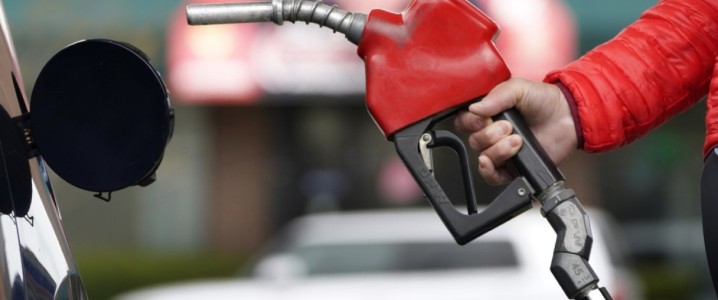Business
U.S. Gas Prices Expected to Drop Below $3 a Gallon This Summer

U.S. motorists are poised to benefit from a significant reduction in gasoline prices this summer, with forecasts indicating that prices may fall below $3 a gallon for the first time in over four years. Current trends show the national average price for gasoline has already dipped to approximately $3.15 per gallon, marking the lowest summer pricing in recent memory. The last time prices fell below the $3 threshold was in May 2021.
Many consumers in the U.S. are already experiencing prices below this mark, with reports from GasBuddy indicating that a majority are paying about $2.99 per gallon, while some are finding prices as low as $2.79. The median price across the nation currently stands at $2.97 per gallon. In contrast, drivers in states such as California ($4.49), Hawaii ($4.47), and Washington ($4.41) face the highest gasoline costs.
The disparity in prices is notable, with the top 10% of gas stations charging approximately $4.34 per gallon, while the lowest 10% are offering it for around $2.54. Diesel prices reflect a similar trend, with most motorists paying about $3.49 per gallon, and a median price of $3.59 being reported. The highest diesel prices are at $4.63 per gallon for the top 10% of stations, compared to an average of $3.07 for the lowest.
Demand Dynamics and Market Influences
Recent data highlights a year-over-year decline of 8.3% in gasoline prices for the 52-week period ending in June, coinciding with a more than 20% drop in oil prices. This decline is largely attributed to concerns over weak demand and potential oversupply from OPEC+. Fuel demand has decreased by 2.5% year-over-year as of July 4, raising alarms during what is typically a peak driving season. The U.S. Energy Information Administration (EIA) reported an average of 9.2 million barrels of gasoline products supplied daily over the last month, reflecting a 1% decline compared to the previous year.
Extreme heat has been cited as a contributing factor to the drop in demand, as high temperatures discourage driving. Traditionally, summer is a high-demand period for fuel in the U.S. Nevertheless, this seasonal trend faces challenges from shifting consumer behavior. Improved fuel efficiency and changes in driving patterns, especially with the rise of remote work, have led to a sustained reduction in gasoline consumption. Current levels have yet to recover to the all-time high of over 9.3 million barrels per day achieved in 2018.
Patrick De Haan, head of petroleum analysis at GasBuddy, noted that these changes could indicate a longer-term shift in fuel consumption patterns.
Electric Vehicles and Future Trends
The growing presence of electric vehicles (EVs) is adding complexity to the gasoline market. Recent estimates suggest that EVs are currently displacing around 3.5 million barrels of oil per day globally, with a significant portion of this displacement occurring within the U.S. The increasing adoption of EVs, particularly in regions such as China and Europe, is reshaping the landscape of fuel demand. The International Energy Agency (IEA) recently projected that the global EV fleet could displace over 5 million barrels of crude oil per day by 2030.
In 2023, the global EV fleet reached 58 million vehicles, which is more than triple the number from four years prior, accounting for around 4% of the total global passenger car fleet. China leads in EV adoption, with approximately one in ten vehicles being electric, while Norway stands out in Europe, where EVs made up an astounding 88% of new car sales in 2024.
As the transition to electric vehicles continues to accelerate, traditional gasoline consumption is likely to face further pressure. In Norway, oil demand declined by 12% from 2021 to 2024, reflecting the broader trends in energy consumption across Europe and beyond. Norway remains a substantial supplier of natural gas to Europe, providing over 52.6% of the European Union’s natural gas imports in early 2023.
The evolving dynamics of fuel demand underscore the importance of adapting to changing consumer behaviors and technological advancements. As the summer progresses, U.S. motorists may find themselves benefiting from lower gasoline prices, but the long-term impacts of electric vehicle adoption and changing consumption patterns could redefine the energy landscape in the years to come.
-

 Health3 months ago
Health3 months agoNeurologist Warns Excessive Use of Supplements Can Harm Brain
-

 Health3 months ago
Health3 months agoFiona Phillips’ Husband Shares Heartfelt Update on Her Alzheimer’s Journey
-

 Science1 month ago
Science1 month agoBrian Cox Addresses Claims of Alien Probe in 3I/ATLAS Discovery
-

 Science1 month ago
Science1 month agoNASA Investigates Unusual Comet 3I/ATLAS; New Findings Emerge
-

 Science4 weeks ago
Science4 weeks agoScientists Examine 3I/ATLAS: Alien Artifact or Cosmic Oddity?
-

 Entertainment4 months ago
Entertainment4 months agoKerry Katona Discusses Future Baby Plans and Brian McFadden’s Wedding
-

 Science4 weeks ago
Science4 weeks agoNASA Investigates Speedy Object 3I/ATLAS, Sparking Speculation
-

 Entertainment4 months ago
Entertainment4 months agoEmmerdale Faces Tension as Dylan and April’s Lives Hang in the Balance
-

 World3 months ago
World3 months agoCole Palmer’s Cryptic Message to Kobbie Mainoo Following Loan Talks
-

 Science4 weeks ago
Science4 weeks agoNASA Scientists Explore Origins of 3I/ATLAS, a Fast-Moving Visitor
-

 Entertainment4 months ago
Entertainment4 months agoLove Island Star Toni Laite’s Mother Expresses Disappointment Over Coupling Decision
-

 Entertainment3 months ago
Entertainment3 months agoMajor Cast Changes at Coronation Street: Exits and Returns in 2025









